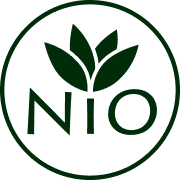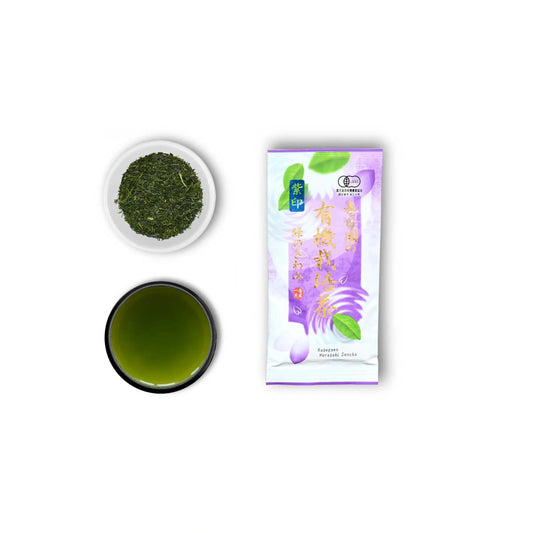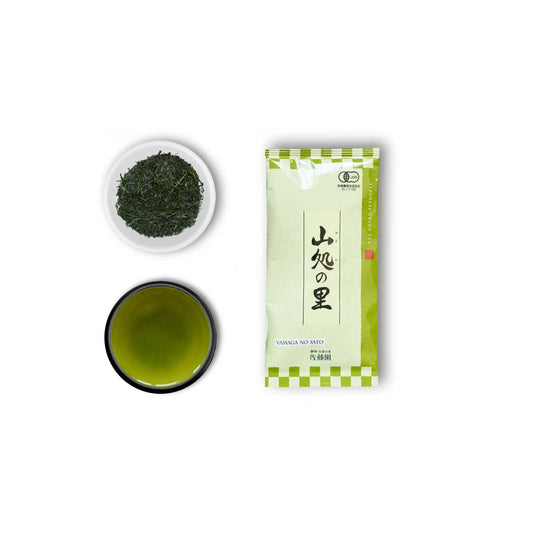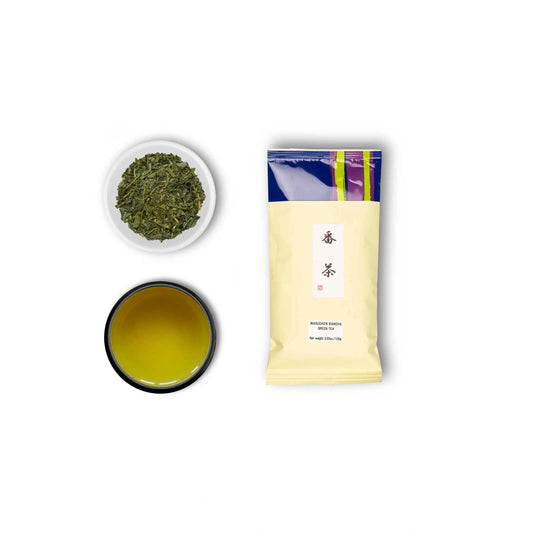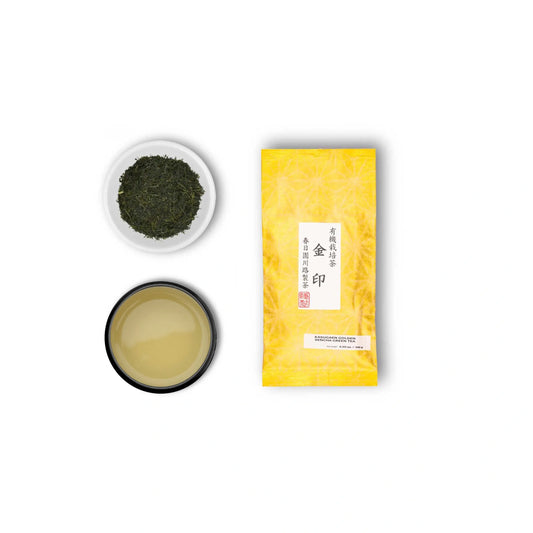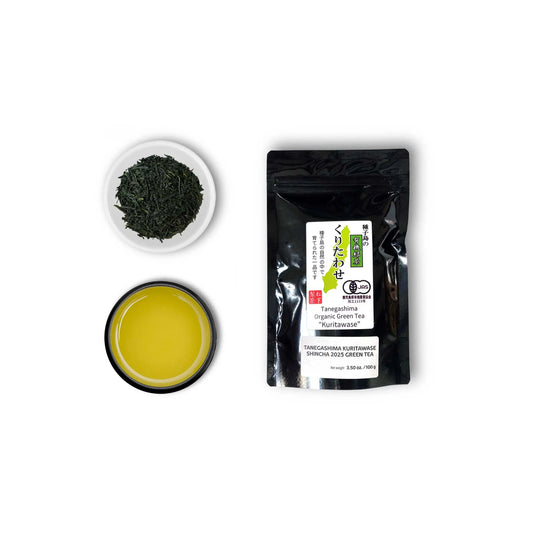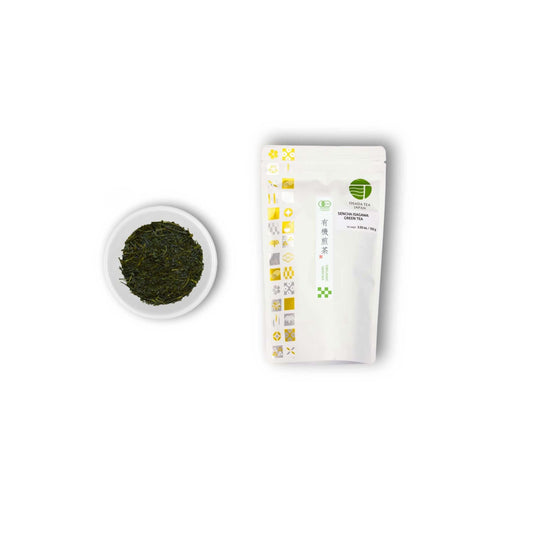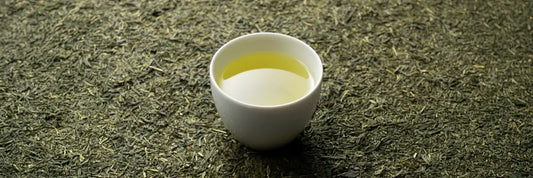-
Fukamushi Sencha Kagoshima Murasaki
Precio habitual A partir de €23,00Precio habitualPrecio unitario por€40,00Precio de oferta A partir de €23,00Oferta -
Sencha Shizuoka Yamaga no Sato
Precio habitual A partir de €30,00Precio habitualPrecio unitario por€36,00Precio de oferta A partir de €30,00Oferta -
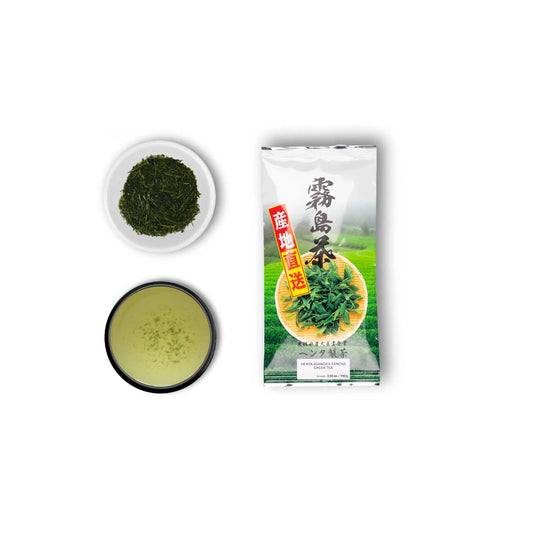 Oferta
OfertaHenta Sencha Asanoka
Precio habitual A partir de €9,99Precio habitualPrecio unitario por€29,00Precio de oferta A partir de €9,99Oferta -
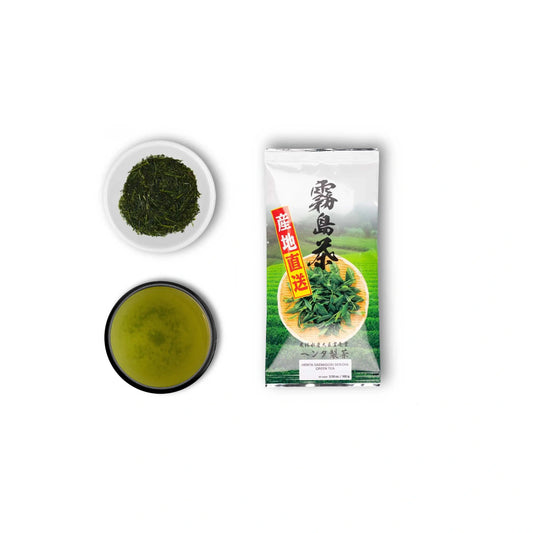 Oferta
OfertaHenta Sencha Saemidori
Precio habitual A partir de €18,00Precio habitualPrecio unitario por€34,00Precio de oferta A partir de €18,00Oferta -
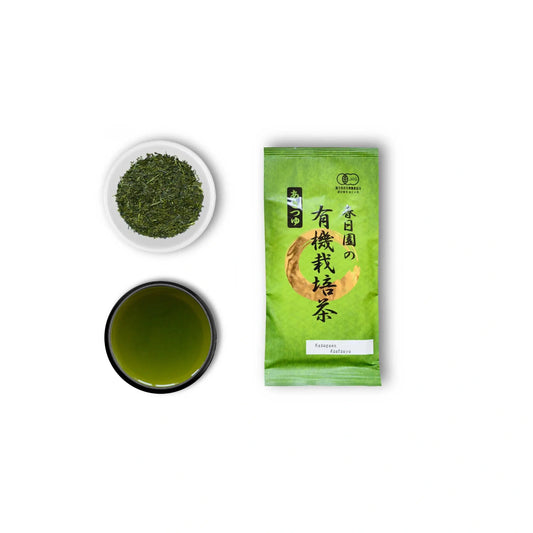 Oferta
OfertaSencha Kasugaen Asatsuyu
Precio habitual A partir de €23,00Precio habitualPrecio unitario por€35,00Precio de oferta A partir de €23,00Oferta -
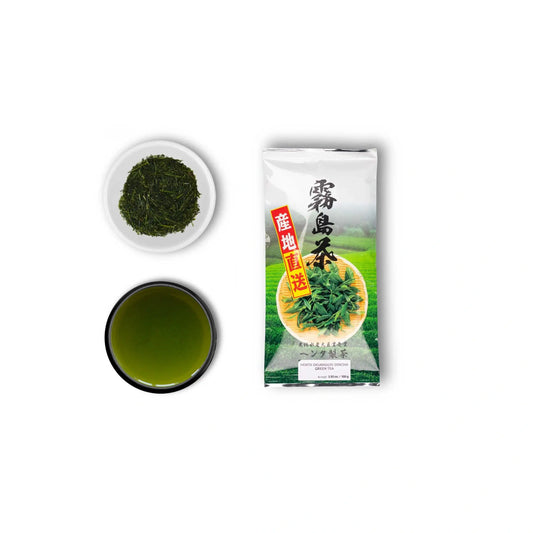 Oferta
OfertaSencha Té Verde Okumidori
Precio habitual A partir de €18,00Precio habitualPrecio unitario por€34,00Precio de oferta A partir de €18,00Oferta -
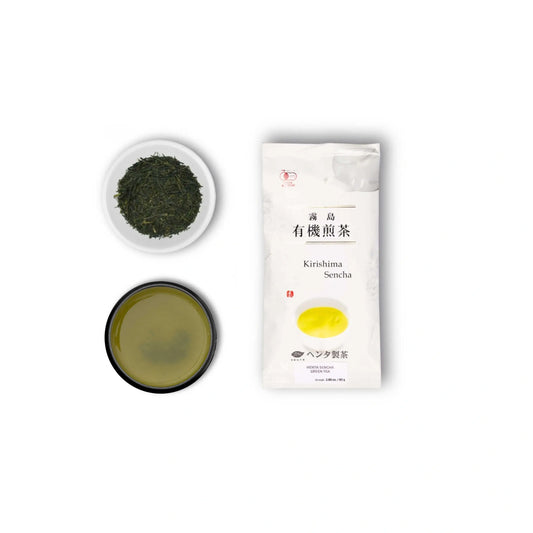 Oferta
OfertaSencha Té Henta Kirishima
Precio habitual A partir de €17,00Precio habitualPrecio unitario por€33,00Precio de oferta A partir de €17,00Oferta -
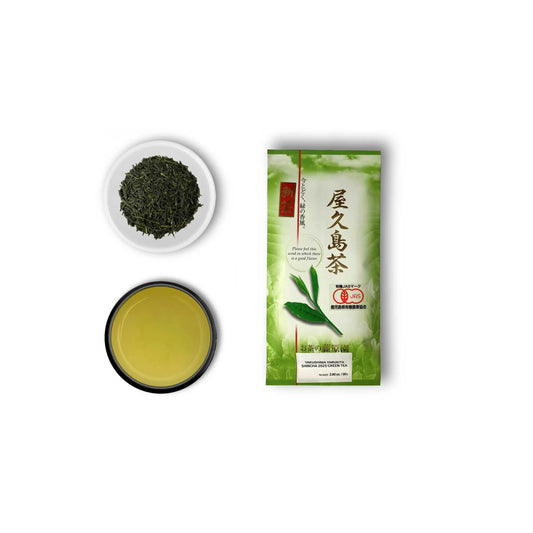 Oferta
OfertaShincha Yakushima Yabukita
Precio habitual €19,99Precio habitualPrecio unitario por€29,00Precio de oferta €19,99Oferta -
Dorado Sencha Yabukita Kasugaen
Precio habitual A partir de €39,00Precio habitualPrecio unitario por€49,00Precio de oferta A partir de €39,00Oferta -
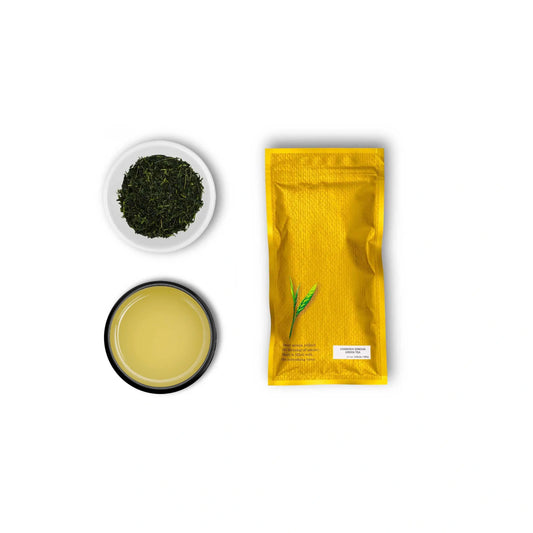 Oferta
OfertaUji Sencha Chanoka
Precio habitual A partir de €29,00Precio habitualPrecio unitario por€47,00Precio de oferta A partir de €29,00Oferta -
Shincha Tanegashima Kuritawase
Precio habitual €36,00Precio habitualPrecio unitario por€49,00Precio de oferta €36,00Oferta -
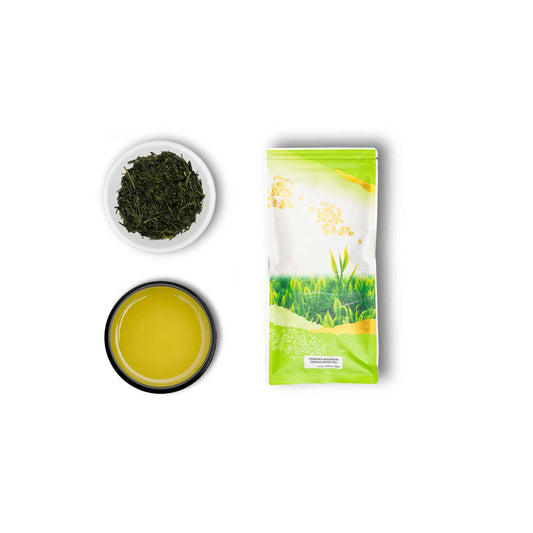 Oferta
OfertaMontaña Chanoka Sencha
Precio habitual A partir de €32,00Precio habitualPrecio unitario por€47,00Precio de oferta A partir de €32,00Oferta -
 Oferta
OfertaSencha Zenkouen Superior
Precio habitual A partir de €27,00Precio habitualPrecio unitario por€49,00Precio de oferta A partir de €27,00Oferta -
Isagawa Sencha Té De Hojas Sueltas
Precio habitual A partir de €24,00Precio habitualPrecio unitario por€40,00Precio de oferta A partir de €24,00Agotado
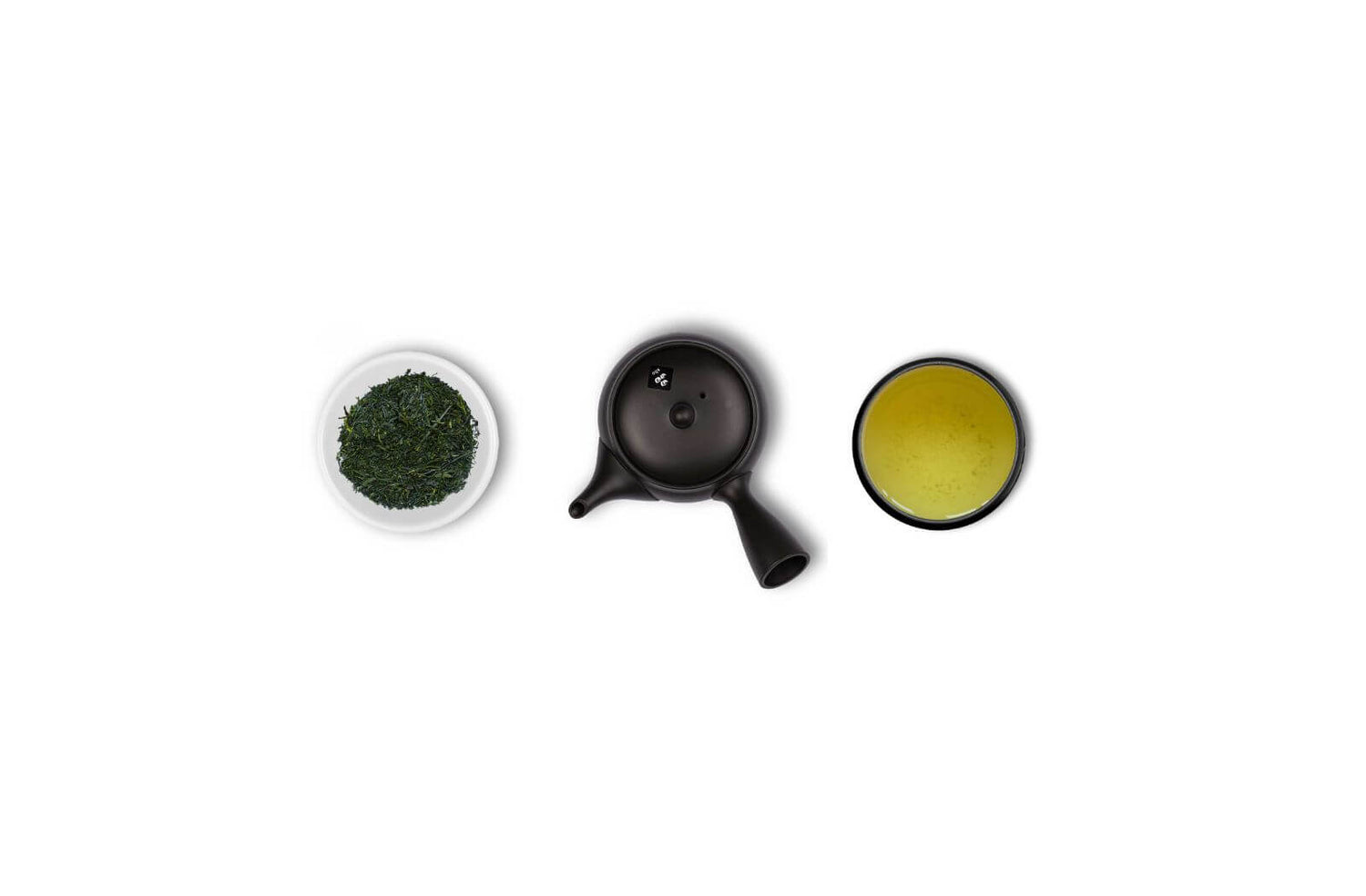
Nuestro Sencha El té proviene exclusivamente de productores de té japoneses de buena reputación.
Trabajamos con decenas de agricultores talentosos que producen té de calidad excepcional. Tras reunirnos con ellos y degustar sus tés en persona, hemos seleccionado algunos que consideramos excepcionales. Estos son los tés que elegimos para compartir con personas de todo el mundo.
-

Our sencha tea is exclusively sourced from reputable Japanese tea farmers
We work with dozens of talented farmers who produce exceptional quality tea. After sitting down with these farmers and tasting their teas in person, we have selected a small number we think are exceptional. These are the teas we chosen to share with people all around the world.
-

Our sencha tea is 100% organically grown and pesticide free
Organic sencha green tea is important to strive for. After visiting tea farms all across Japan, we have had a chance to compare organic tea fields with non-organic tea fields. We found that the tea fields that used pesticides and chemicals weren’t creating a healthy ecosystem for plant and animal life. The organic tea fields had much more biodiversity, with insects, birds and even mammals thriving between the tea plants. By switching to organic sencha green tea, you are not only making a better choice for yourself, but also helping to create a more sustainable tea industry. At Nio, we believe that tea fields should not only produce great tea, but also become a habitat for other plants and animals.
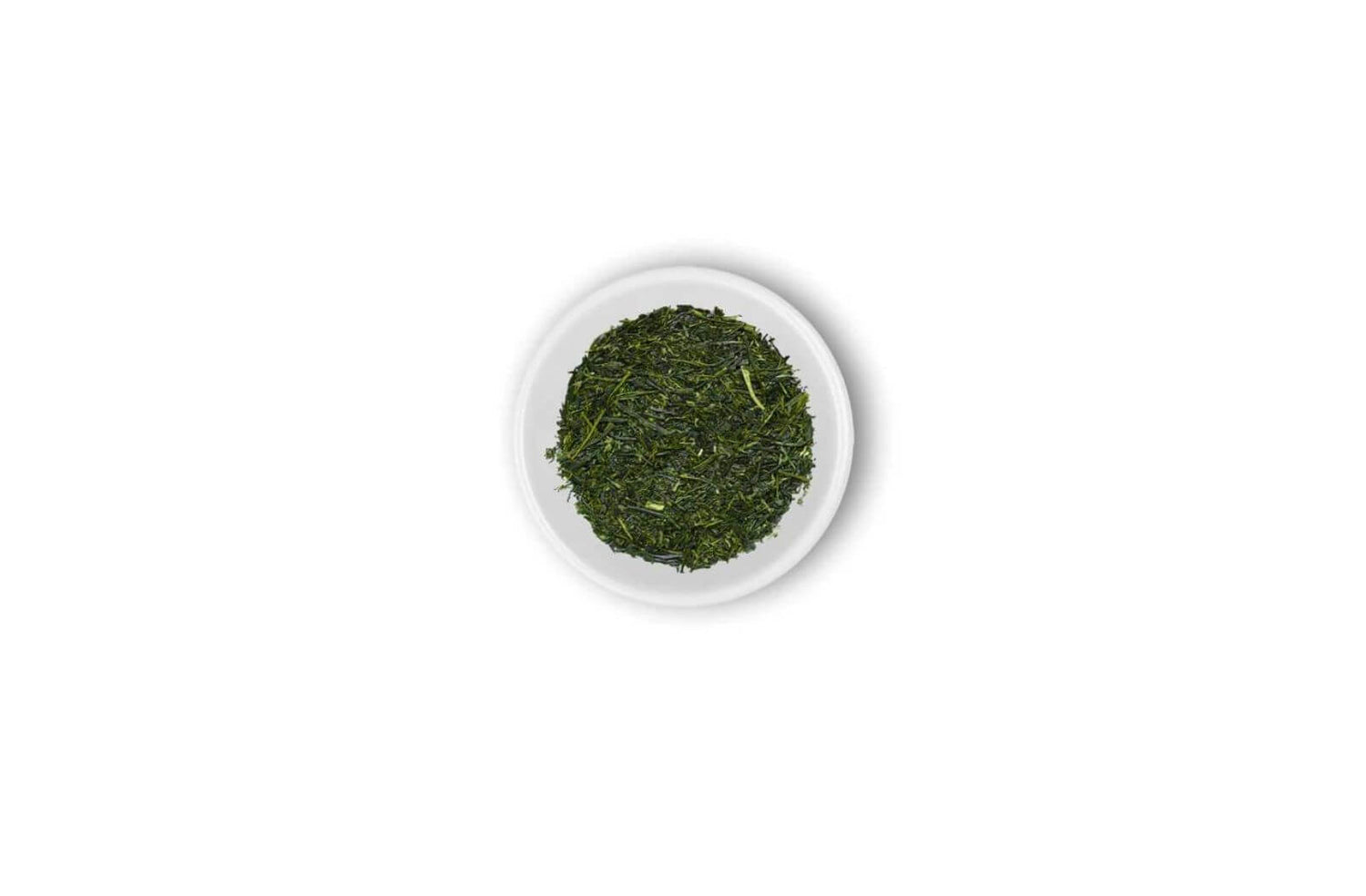
Historia de Sencha
En el Japón medieval, la forma más común de consumir té verde era en polvo. Lo que puede considerarse una forma temprana de matcha, se popularizó gracias a su uso en la ceremonia japonesa del té. A principios del siglo XVIII, se comenzó a buscar una forma más sencilla de preparar el té, sin todas las reglas y principios.
Un agricultor de té llamado Nagatani Soen desarrolló un té que podía prepararse de forma más sencilla. Descubrió que al cocer al vapor las hojas y luego enrollarlas en agujas apretadas, se podía conservar el sabor hasta que el té estuviera listo para infusionarlo en agua caliente. Esto significa que solo se necesitan las hojas en una tetera y luego filtrarlas al verterlas. Fue aquí donde Sencha té nació.

Flavour profile of Japanese sencha green tea
It is difficult to describe the taste profile of sencha tea, because it is such a broad category. In sweeter green teas, you get notes of tropical fruit, sweet corn and steamed vegetables. On drier senchas, you will notice more of these citrusy flavor profiles, with notes of straw and late summer grass.
Proceso de cosecha de Sencha
Sencha Proceso de sombreado del té
Otra forma de categorizar Sencha El té se cultiva a base de sombra. Si un agricultor desea producir un té más dulce, cubre las plantas con una especie de malla antes de la cosecha para bloquear el sol. Normalmente, la planta de té convierte la teanina en catequinas al exponerse a la luz solar, pero al estar a la sombra, retiene más teanina, con sus propiedades dulces y sabrosas, y minimiza las catequinas, más amargas.
Sencha Métodos de cocción al vapor del té
Además de decidir durante cuánto tiempo se debe sombrear el té, los productores de té japonés... Sencha tienen un as más bajo la manga y es el proceso de cocción al vapor. Si bien todos los japoneses... Sencha El té verde se cuece al vapor después de la cosecha y los distintos tés se cuece al vapor durante distintos tiempos, lo que produce resultados sorprendentemente diferentes.
-

Asamushi
Steamed for 20-40 seconds
Asamushi sencha or short steamed sencha tea is made from leaves that have been steamed for just 20-40 seconds. In these sencha teas, you will find larger needles shapes and a slightly drier taste profile. The color of the liquor will be bright yellow and almost transparent.
-

Futsumushi
Steamed for 40-80 seconds
Futsumushi is a term you will rarely hear used to describe sencha tea, because it refers to the normal steaming time of between 40-80 seconds. If the teas doesn’t mention Asamushi or fukamushi, chances are it’s a “middle steamed” sencha tea with taste characteristics of both.
-

Fukamushi
Steamed for 80-200 seconds
These are the so called deep steamed sencha teas, made from leaves that have been steamed for between 80-200 seconds. During this time, the cell membranes of the leaf are broken down allowing more of the leaf to flow into the cup. Here you will see smaller leaves and the color will be a vibrant, cloudy green. The flavor of these fukamushi teas are juicier, with notes of tropical fruit, steamed vegetables and edamame.

¿Qué necesitas preparar? Sencha ¿té verde?
A diferencia del matcha, Sencha El té verde solo requiere una tetera: la tetera kyusu. Esta tetera es la mejor herramienta para preparar té verde japonés, ya que ofrece una base amplia para que las hojas se desplieguen y un filtro incorporado para filtrarlas al verter.
La tetera kyusu también tiene un asa lateral hueca para facilitar el vertido. Sencha Té. Solo necesitas un rápido giro de muñeca para servir el té, y el asa lateral hueca mantiene la tetera fría al tacto para que no te quemes las manos.
Mira nuestro video completo Sencha Guía completa para preparar té

Benefits of sencha tea
There are a few different benefits of sencha tea, and we are going to cover a few of them here:
Caffeine content
Sencha tea can be considered a medium caffeine tea. The caffeine content is not as high compared to some of the heavy hitters like gyokuro and matcha but it is significantly higher than low caffeine teas like hojicha, kukicha, bancha and genmaicha. With a cup of sencha, you may get between 40-60mg of caffeine which is about half the amount as a small cup of coffee. This can give you enough energy to get you through the morning, but not so much that you become jittery or anxious during the day.
EGCG in Sencha tea
In addition to caffeine and theanine, sencha also contains a lot of EGCG or Epigallocatechin gallate, the primary antioxidant in green tea. This is more prevalent in unshaded sencha teas, and it is extracted at higher temperatures. If you want to really get a lot of antioxidants out of your tea, you can brew it with boiling water, but this will make a very bitter tea!
Preguntas frecuentes
¿Necesitas ayuda? Te tenemos cubierto…
Entrega
Actualmente ofrecemos entrega gratuita Opciones para todos en todo el mundo. Para ciertos pedidos, también ofrecemos envío exprés gratuito, que suele llegar en un par de días. Si tu pedido es urgente, asegúrate de seleccionar una de las opciones de envío más rápidas al finalizar la compra.
Tés y vajilla
¿Tienes preguntas sobre nuestros productos? Puedes preguntar a nuestro equipo de atención al cliente o consultar los cientos de videos que tenemos en YouTube, Instagram, Facebook y TikTok para más información.
Problemas de pedidos
Aunque los envíos suelen realizarse de forma rápida y eficiente desde nuestros centros de distribución en la UE y EE. UU., pueden producirse retrasos debido a las aduanas, el tráfico durante las festividades y el clima. Te proporcionaremos información de seguimiento al realizar tu pedido para que sepas dónde está tu té en todo momento.
Pagos
Actualmente aceptamos pagos con las principales tarjetas de crédito, PayPal, Apple Pay y transferencia bancaria. Si tiene alguna pregunta sobre su método de pago preferido, contáctenos y encontraremos la solución ideal.
Devoluciones y reembolsos
Aunque las devoluciones son muy poco frecuentes en Nio, ocasionalmente ocurren. Queremos que todos estén satisfechos con el té que reciben, por lo que preferimos ofrecer un té de reemplazo en lugar de dejar a alguien con uno que no le guste. Por favor, contáctenos y podremos resolver cualquier problema que pueda tener con el té que pidió.
